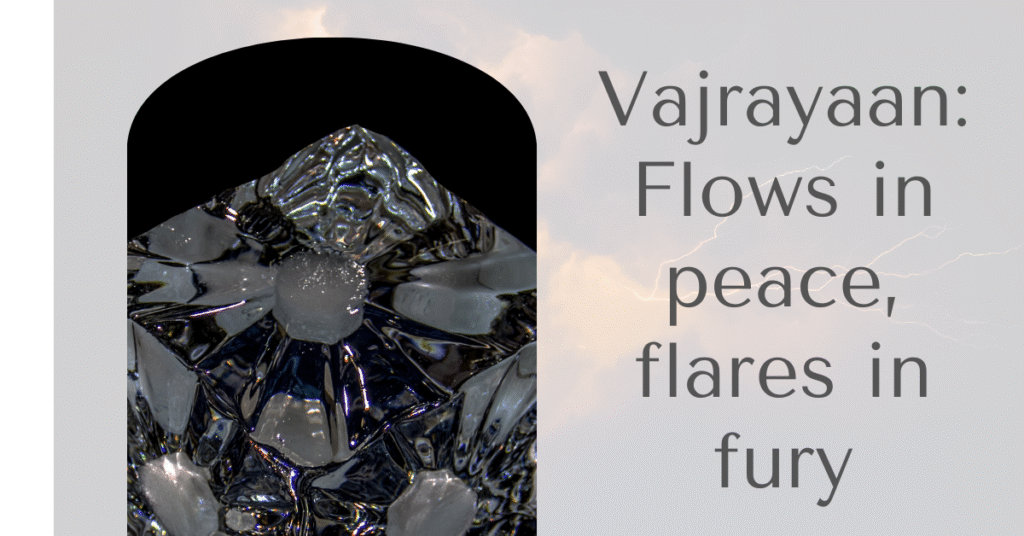Discover the deep meaning of the power of Vajra—from Rishi Dadhichi’s legendary sacrifice in Hindu mythology to the diamond path of Vajrayaan Buddhism. Learn how the Vajra symbolizes spiritual power, transformation, and unbreakable wisdom across Tantra, Yoga, and Dharma traditions.
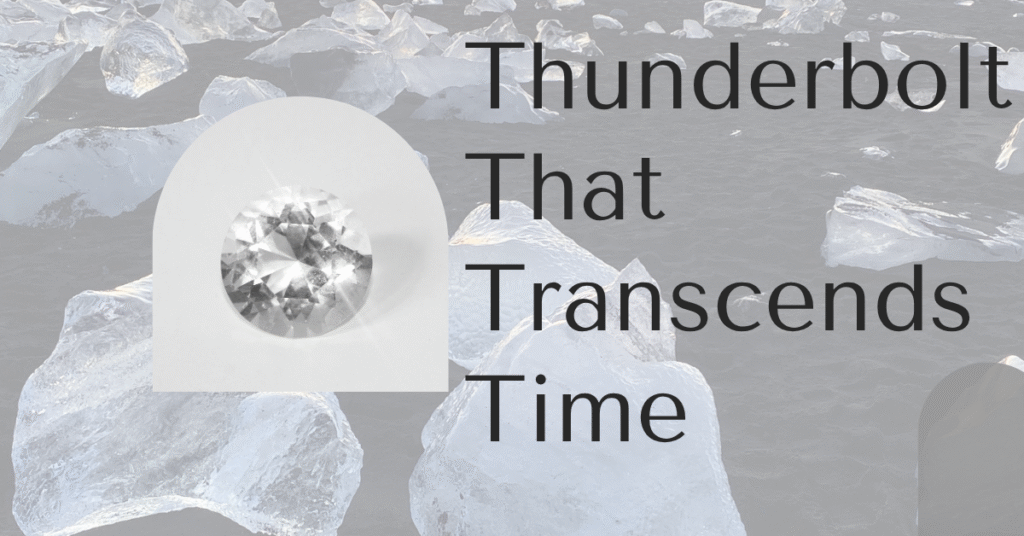
The Thunderbolt That Transcends Time
Across Hindu and Buddhist traditions, the power of Vajra stands as a potent symbol of spiritual strength, indestructible truth, and sudden awakening. From the mythic tale of Rishi Dadhichi, who gave his life so that Indra could defeat the asura Vritra, to its deep philosophical role in Tantra, Yoga, and Vajrayana Buddhism, the power of Vajra reflects a path of clarity, courage, and liberation. In this blog, we explore the rich journey of the Vajra across the sacred dharma streams of the East.
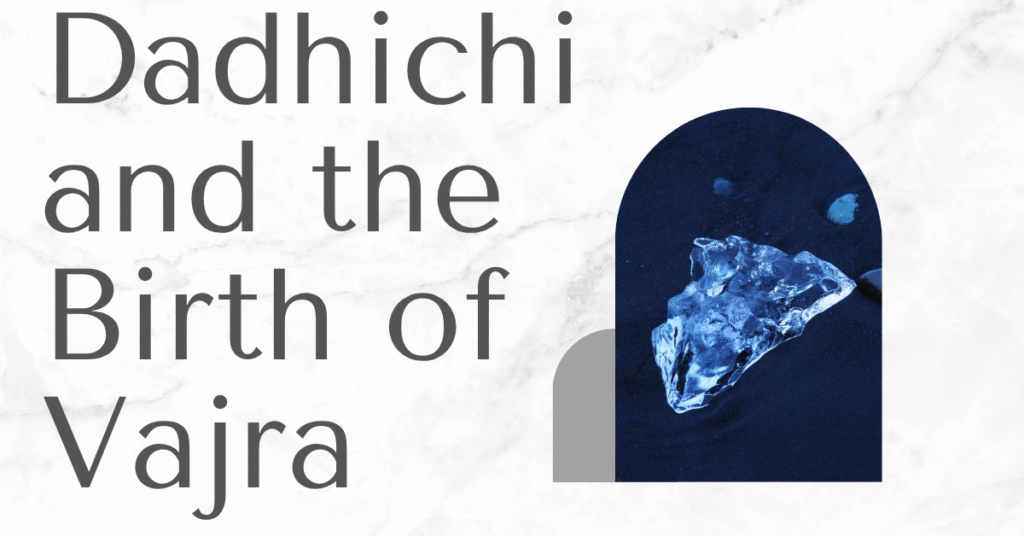
The Story of Dadhichi and the Birth of Vajra
The legend of Rishi Dadhichi is one of the most powerful in the Hindu Puranas. When the devas were unable to defeat the asura Vritra, Lord Indra was told by Lord Vishnu that only a weapon made from the bones of a sage could vanquish him. Without hesitation, Dadhichi agreed to offer his very body for the greater good.
His bones were transformed into the Vajra—a divine weapon of thunderbolt and diamond-like indestructibility. With this, Indra destroyed Vritra, symbolizing the triumph of dharma over adharma with the power of vajra.
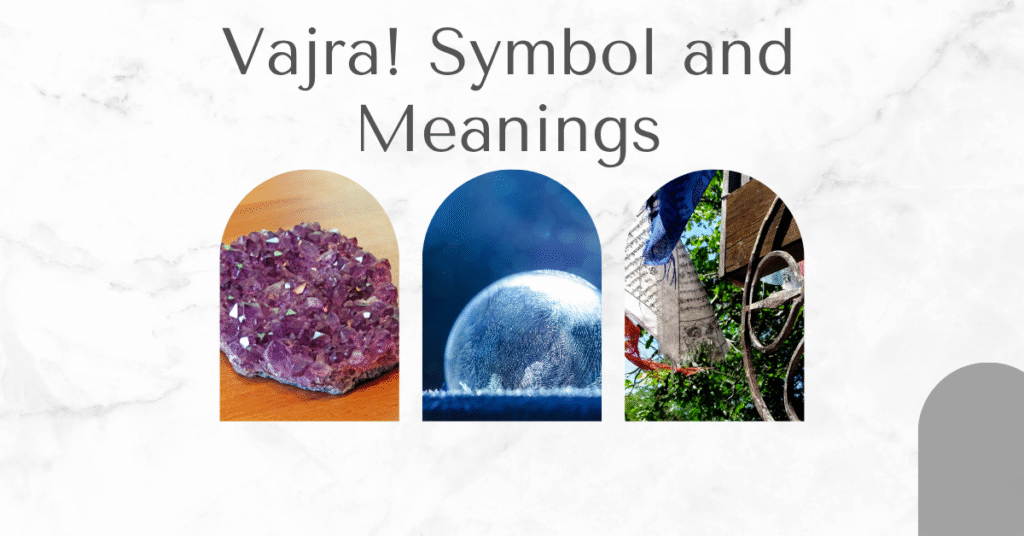
What Is a Vajra? The Symbol and Its Meanings
The Sanskrit word Vajra means both thunderbolt and diamond. These two qualities—unbreakable strength and piercing clarity—form the heart of the Vajra’s symbolism.
- Thunderbolt: Sudden, powerful, illuminating. A force that destroys ignorance.
- Diamond: Indestructible, pure, and transparent—like awakened consciousness.
In Tibetan Buddhism, the Vajra is often paired with the ghanta (bell) to represent the union of method (masculine) and wisdom (feminine).

Vajra in Hindu Tantra and Yoga
While widely known in Vajrayana Buddhism, the Vajra holds deep roots in Hindu Tantra and Hatha Yoga as well:
- Vajrasana (the thunderbolt pose): A stable meditative posture that aids digestion and grounding.
- Vajroli Mudra: A yogic practice aimed at controlling sexual energy, related to the inner masculine principle.
- Vajra Nadi: A subtle energy channel associated with inner willpower and spiritual stability.
In these practices, Vajra represents inner structure, energy mastery, and unshakable awareness.
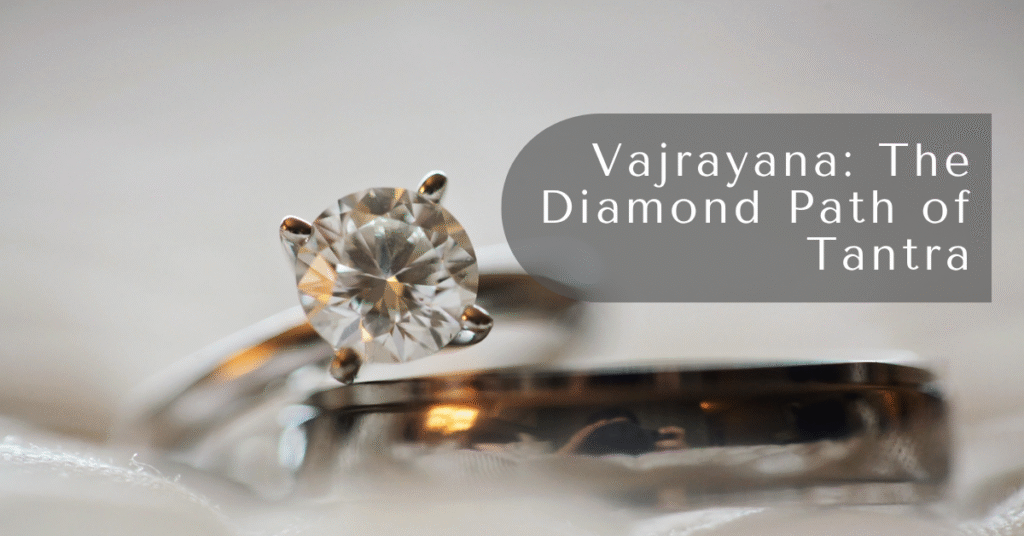
Vajrayaan: The Diamond Path of Tantra
Vajrayaan Buddhism, also known as the Diamond Vehicle, takes its name directly from the Vajra. This esoteric path emphasizes:
- Mantra, mudra, and mandala practices
- Deity visualizations and ritual initiation (abhisheka)
- Transformation of the ordinary mind into enlightened awareness
The Vajra here symbolizes sudden insight, non-duality, and the indestructible nature of true wisdom, the true power of vajra.
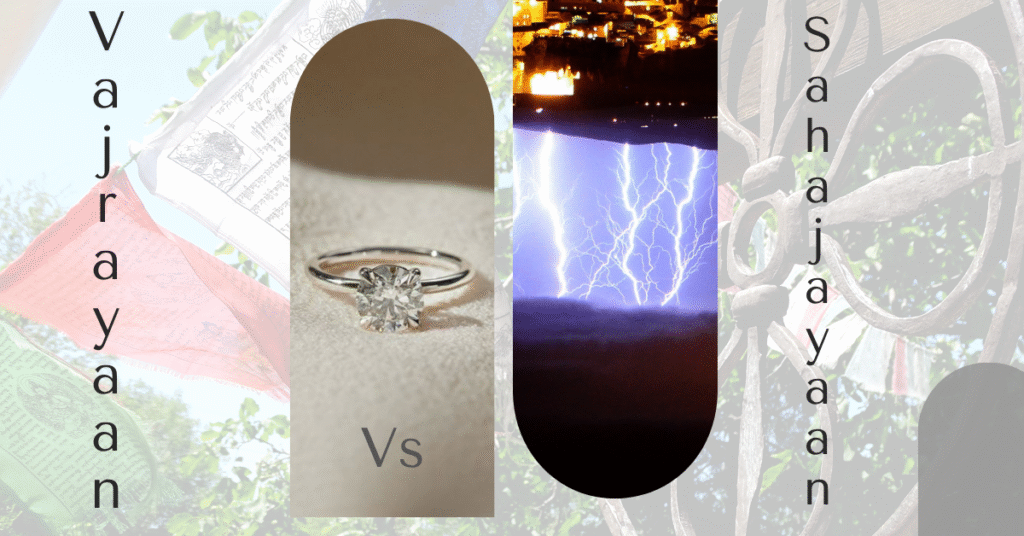
Vajrayaan vs Sahajayaan: Path of Thunder vs Path of Flow
In the evolution of Buddhist Tantra, two key paths emerged:
- Vajrayaan (Thunderbolt Vehicle): Sharp, intense, ritual-based. Emphasizes mastery, guru transmission, and exacting sadhana.
- Sahajayaan (Spontaneous Vehicle): Gentle, natural, meditative. Centers on the innate, effortless awareness of sahaja.
The power of Vajra represents the active, cutting-through force, while Sahaja is the fluid, flowing wisdom. Both are valid approaches to liberation, depending on temperament and karmic disposition.

Five Qualities of the Vajra Mind
In advanced Vajrayaan teachings, the awakened mind—called the Vajra mind—has five distinct qualities:
- Unbreakable – Not shaken by outer or inner conditions
- Clear – Free of delusion
- Indivisible – Non-dual and integrated
- Radiant – Luminous and all-pervading
- Compassionate – Fierce love that cuts through ignorance
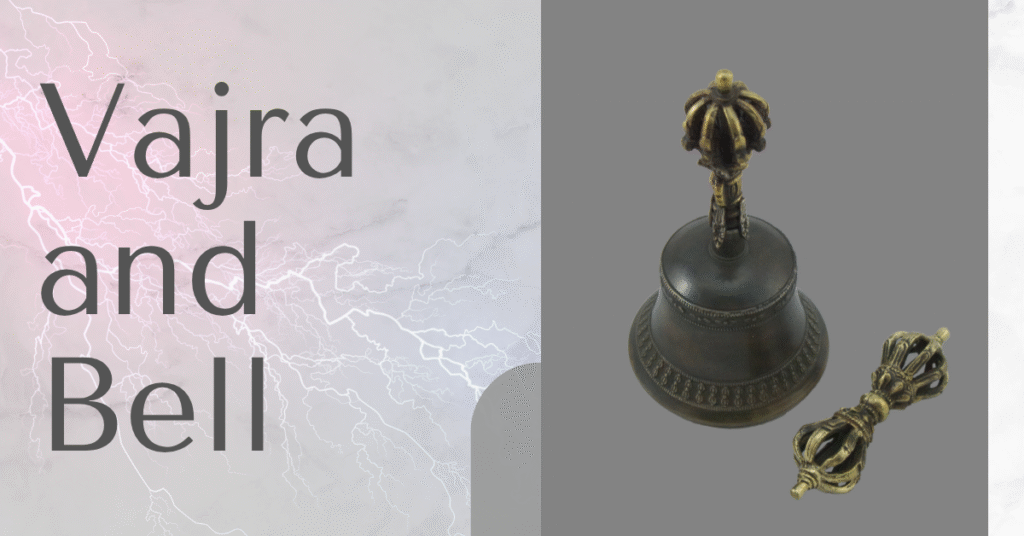
Ritual Use of Vajra and Bell (Dorje and Ghanta)
In Tibetan Buddhism and Hindu Tantra alike, rituals often involve the Vajra (Dorje) and Ghanta (bell):
- The Dorje is held in the right hand: symbol of skillful means, method, and power.
- The Bell is held in the left: representing wisdom, emptiness, and receptivity.
Their union symbolizes the sacred dance of Shiva and Shakti, or awareness and form.
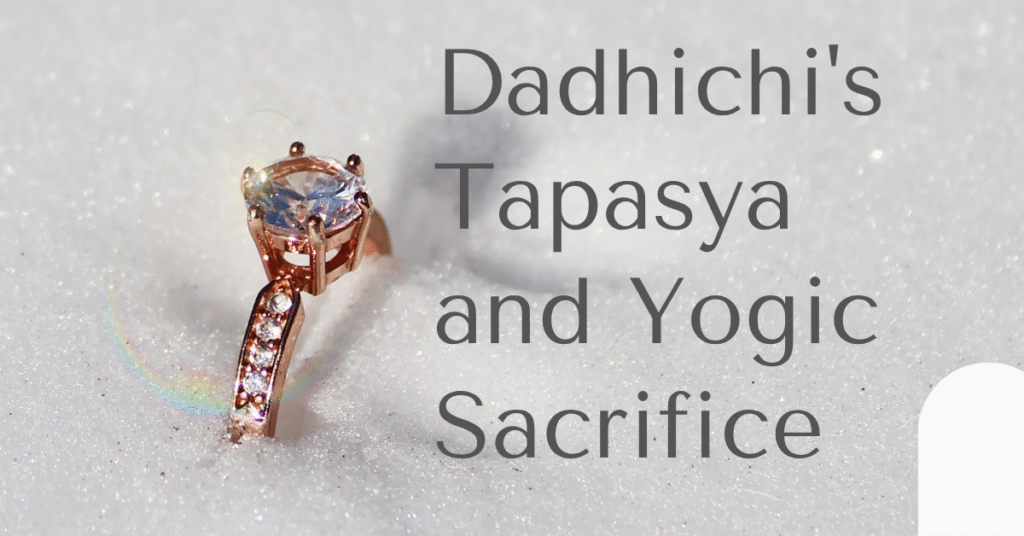
Dadhichi’s Tapasya and Yogic Sacrifice
Dadhichi’s gift was more than a physical offering—it was an act of supreme tapasya. In yoga and Tantra, tapas is the fire of austerity and transformation.
He willingly gave up his body so the world could be protected. This is symbolic of the ultimate yogic act—offering the ego and form into the fire of truth.

Modern Relevance: Living with Vajra Awareness
In today’s chaotic world, to live with Vajra awareness is to be:
- Unshakable in values
- Clear in purpose
- Strong in presence
- Compassionate yet fierce
Whether you’re a parent, yogi, artist, or leader, the power of Vajra invites you to show up with truth, integrity, and luminous clarity.
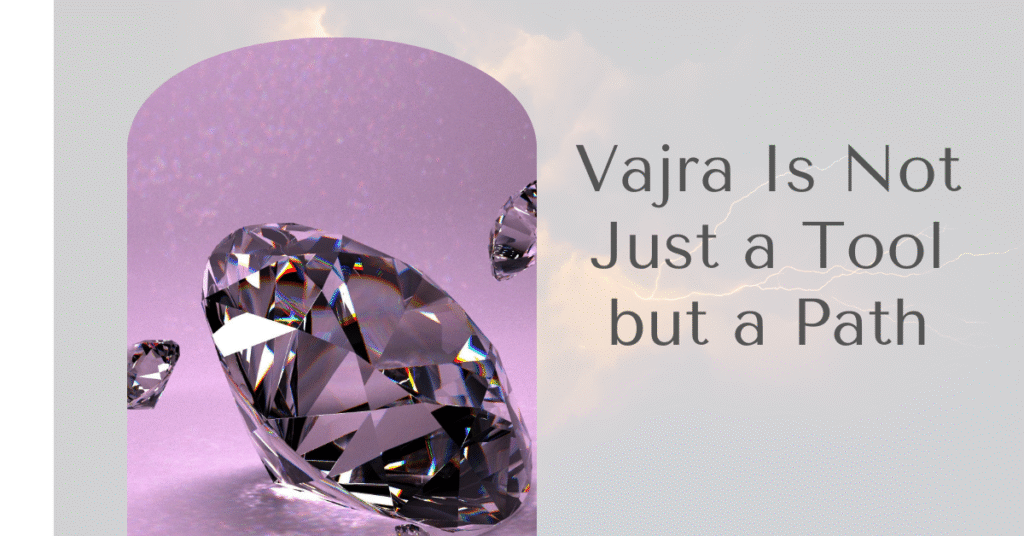
Conclusion: The Vajra Is Not Just a Tool—It Is a Path
From the bones of Rishi Dadhichi to the enlightened hearts of Vajrayaan adepts, the power of Vajra remains a sacred symbol of power and liberation. It cuts through illusion. It anchors us in truth. It invites us to live with the strength of a diamond and the strike of thunder.
May we walk the Vajra path—not just in ceremony, but in life.
